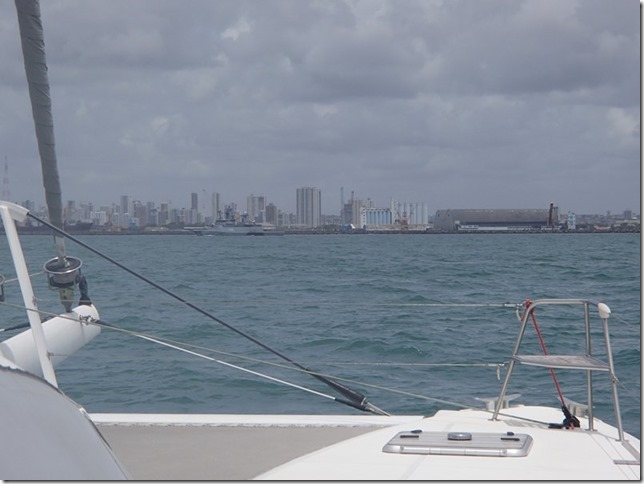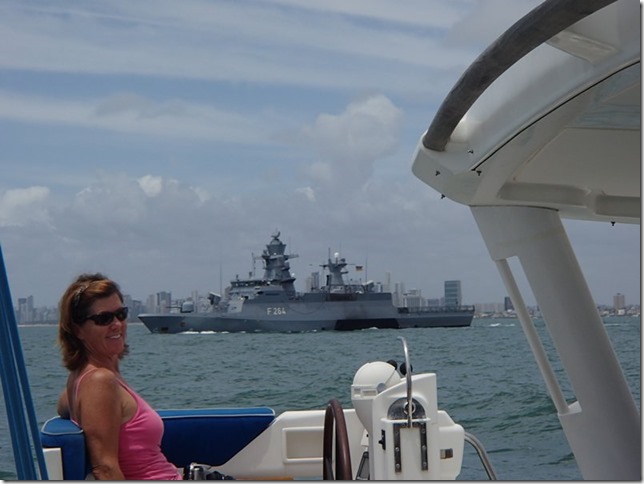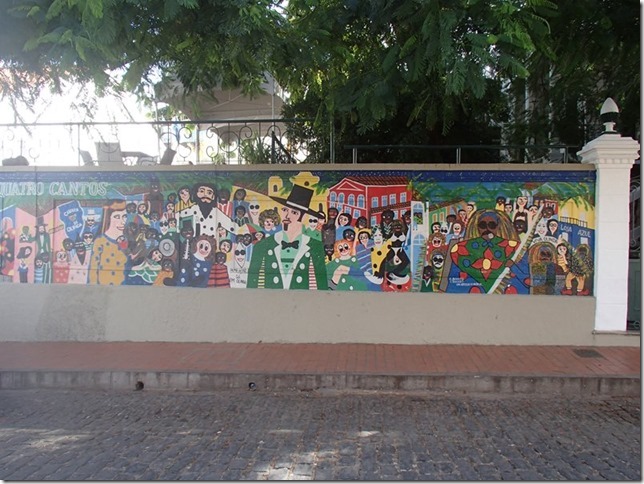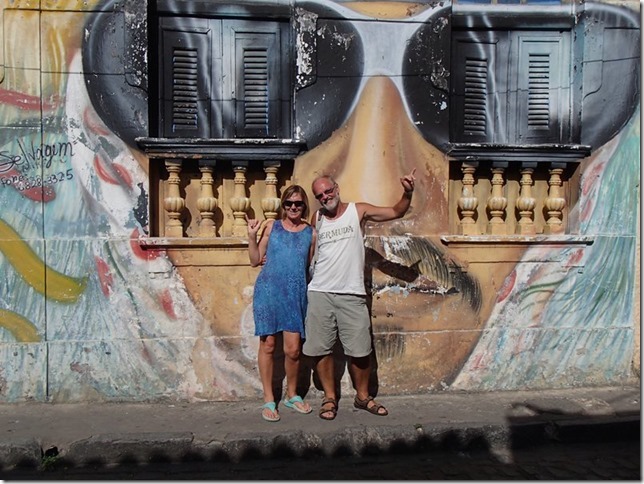Recife

Anastasia
Phil May and Andrea Twigg
Wed 27 Feb 2013 15:07
|
08:04.8S 034:53.3W
The first thing that strikes you as you approach Recife is the huge expanse
of high rise buildings. Not huge buildings, mostly twenty stories or so,
but they are not confined to any specific downtown area, spreading along the
coast as far as the eye can see in both directions.
 The harbour has a “rip rap” breakwater across the entrance, which makes it
quite a confined space for big ships to manoeuvre. We waited a little
while to let a German navy vessel come out before entering (and Corinne posed
for a photo).
 Most of the ARC boats chose to anchor in the harbour outside the first
yacht club you come to. We decided to go up the river to a second yacht
club, the Cabanga club, which has pontoon mooring and a swimming pool and
restaurant. The only problem was that there is a sand bar at the entrance
we had to get over. The pilot book says entrance is dredged to 1.3 meters
deep, but to be on the safe side we waited until half tide so we should have a
depth of about 2.3 meters, which should be is plenty of water for
Anastasia. What the book didn’t say was that the entrance is only about 12
meters wide and they dredge the middle deeper than the sides. Anastasia
being 8 meters wide, we touched the bottom at one side of the entrance.
The incoming tide went on and pushed us through but spun us around a bit.
At the same time a stupid power boat had decided to try and squeeze through the
gap between us and the entrance and it all got a bit hairy for a while, but we
managed to get in without hitting them.
Cabanga yacht club was a nice place to hang out for a couple of days, with
a big swimming pool, snack bar and, most importantly, good capirinhos.
We spent an afternoon visiting Olinda, an ancient town next to
Recife. The town is a world heritage site, but most of the old buildings
are still drastically in need of restoration. It is where all the artists
of the area hang out. They paint the external walls of their galleries and
local restaurants to attract visitors.
  My last day was spent sewing the clew tapes back on the mainsail once
more. Herve came up with the excellent suggestion of using some of his
Spectra fishing braid as the thread, which has a 100 kilo breaking strain.
This new repair managed to withstand the stress of 20 knots of wind on the beam
on the way up to Fernando do Noronho.
When we left the yacht club we made sure it was fully high tide. The
irony is that we were then held up by a dredging barge that was removing some of
the silt from the entrance.
|